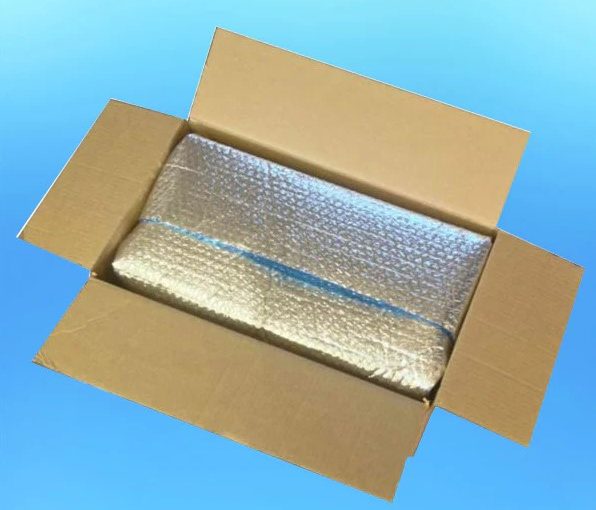Most of the foil bubble product used for perishable items, does not achieve the level of reflectivity where it can be called radiant barrier and, the bubbles are smaller and fragile.
In the world of packaging, it is not always about ensuring someone’s order arrives safely and still cold. Usually, it is a tug-of-war between the goal and the solution versus what costs less. One of the greatest mistakes by packaging companies and food shippers is thinking the packaging material is single use which, is why the expenditure for good radiant barrier bubble foil is not a priority. IF they were to use good material and people were educated about reusing the products, that the barrier is still good after many, even endless uses, this would help promote good radiant barrier use. There are companies who recycle radiant barrier bubble foil and a creative mind, could start their own recycling per se and collect the materials to resell as used.
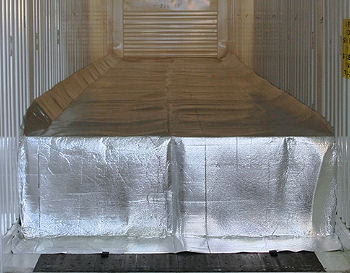
Do not get “wrapped up” in the R-value discussion with cool pack shipping, R-value has no relation to the end goal. With foil bubble shipping options all over the market, the key to finding the product that truly does what it is meant to do, is difficult. For foil bubble wrap to be called Radiant Barrier, it must reflect a minimum of 95% radiant heat and have a low emissivity. Whether it is single or double bubble does not affect the performance/job of the product which, is reflecting radiant heat. This means, it boils down to cost. The foil reflective bubble bags currently used for cosmetics, supplements, food, and chocolate shipments, is cheap, the bubbles are fragile (and most are very small bubbles) and is not true radiant barrier. The question is, does it work? Not well at all because no one is currently using radiant barrier, and whatever foil it is, will only reflect for a short time, a few hours.
We have seen chocolates arrive from the East Coast wrapped in a foil bubble bag then placed in a box with air filled plastic pillows and a gel pack taped to the foil bubble bag. Sadly, the added gel pack is the “bad guy” in this system because once the energy has exchanged, the pack begins absorbing whatever heat there is in the box and from the heat coming through the sides of the carton. The gel pack acts like fiberglass insulation, it absorbs and then releases conductive heat. Simple logic should prevail regarding cold gel packs; once they heat up, where does that heat go?
Nowhere, it stays inside and keeps absorbing more heat keeping the box interior hot; not warm, but HOT. No matter what is wrapped in the foil bag, it will suffer. Once the gel is hot, the reflective material (IF TRUE RADIANT BARRIER) tries to reflect that heat back out but it has no where to go so the gel pack just stays hot and none of that heat from both products can escape. Gel packs also increase the shipping weight meaning higher shipping costs.
One great way to get around this is to use Tempshield single or double bubble RADIANT BARRIER to line the box. Pre-cut pieces versus trying to find the perfect pre-made bag to fit the box. Foil bubble is so easy to cut and pre-cutting pieces to fit the box sizes used is not very time consuming. Premade box liners cost 10-20% less than Styrofoam boxes and cutting your own, even less.
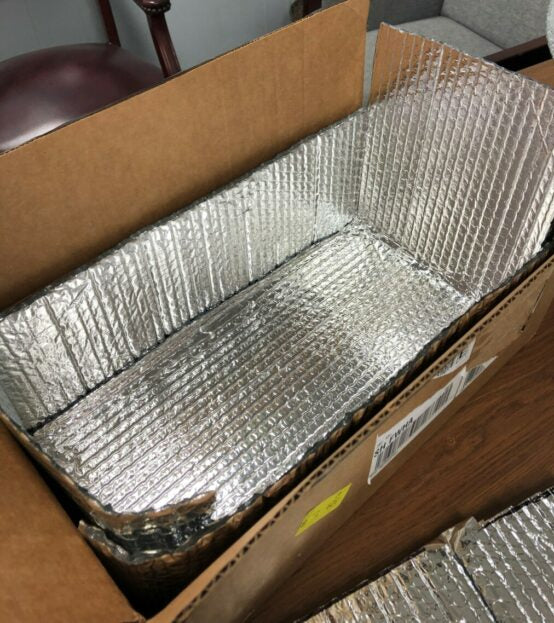
Wrap the object in the Tempshield as well. Cut long pieces to fold over the top and close the foil like an envelope or just line the bottom and sides and cut a piece to place on top as a lid. IF there is air space inside the box between the lined sides and the wrapped object, the contents will stay cool. If necessary, a very small gel pack may be placed inside. This will remain cool due to the barrier reflecting the radiant heat away from the box contents. In a sense, this is also a multi-layer application because the lined box will catch 95% of radiant heat and the wrapped object will be protected from any leftover radiant heat. We have varying widths making it easy and fast to line a box. The bubble foil for the wrapped object can be foil on one side and white on the other.
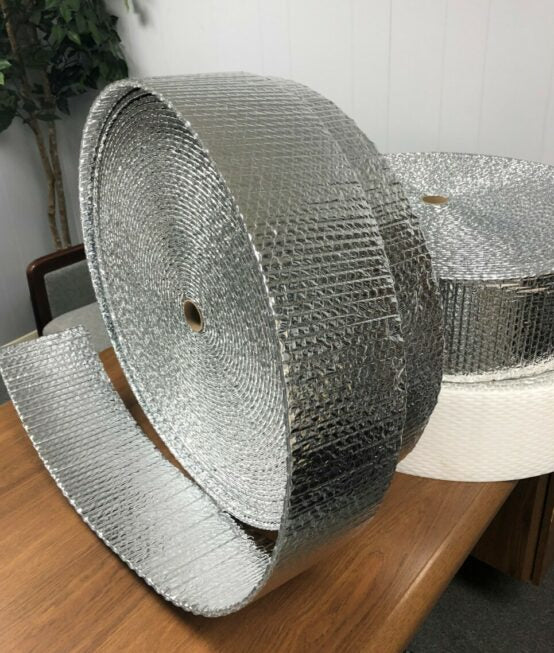
Heat reflecting technology requires a fraction of the space of traditional Styrofoam inserts and boxes and, box inserts require less storage space in a warehouse. Lighter weight boxes equate to lower shipping costs.
Insulating is all about trapping air in layers. Animals fluff their fur or feathers when it is cold trapping air and this reduces the amount of heat energy lost. Thus, matter can be insulators of energy or, conductors. Metals are great examples of conductors. Insulators STOP energy flowing through them such as, plastics, glass and air. When keeping shipped items cool, the problem is always about heat “leaking” in. Cold does not leak out. If we could block the heat from the exterior surface of the box, there would be nothing to conduct but foil wrapped boxes might be a bit of a push however, highly effective.
Insulating on a larger shipping scale such as pallets or containers Tempshield works great as a pallet cover or as a large blanket over multiple pallets and metal shipping containers can be lined with it protecting cargo up to 72 hours.
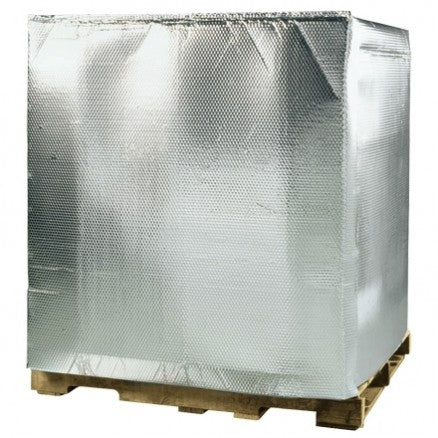
An extraordinary example of a multi-layer application using our Tempshield bubble radiant barrier was for a large cold-storage facility. During the design phase they were told two cooling towers were necessary however, the multi-layered bubble foil insulation application was so efficient, the second cooling tower has never been used and no thermal insulation was installed. Yes, let me repeat that, no thermal insulation and only ONE cooling tower is being utilized. They reported this application has cut air conditioning cost by 50% versus using the same R-Value in fiberglass insulation.
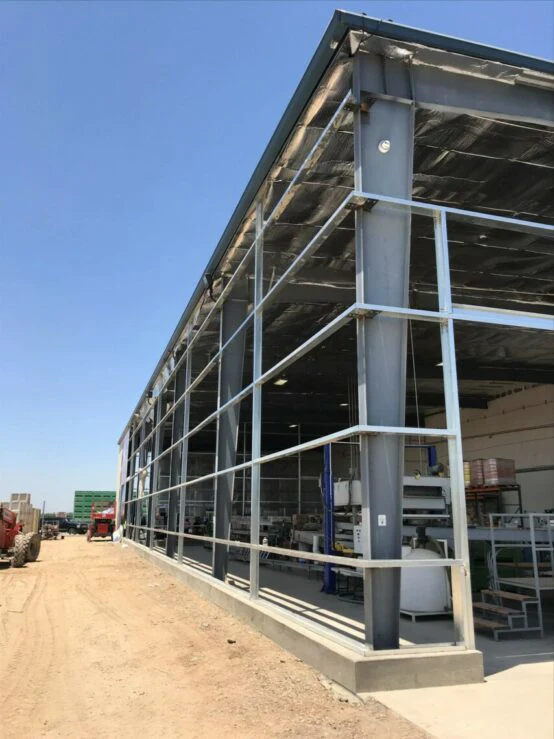
Adding 99% reflectivity to the attic envelope is the reason. When applying a Radiant Barrier to the building envelope you are directly addressing radiation. The energy savings has been tremendous and will continue for this client. The application is such a success, it should and could be adopted industry wide.

